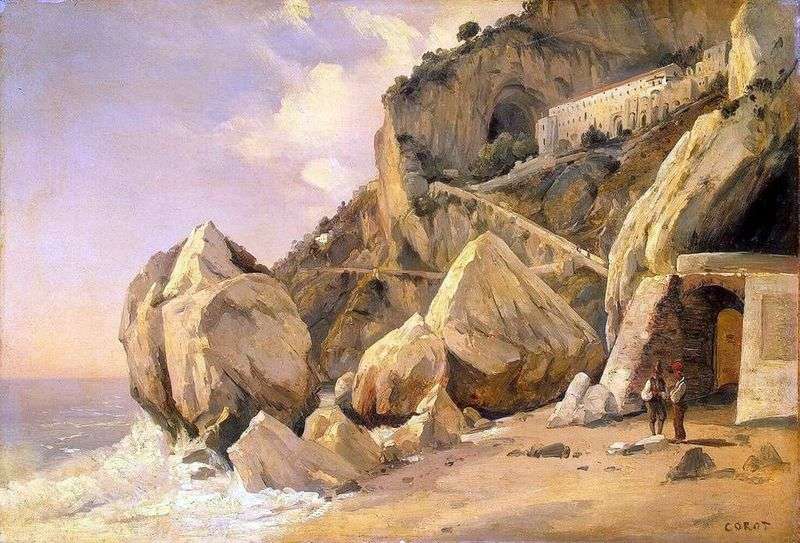
The motif of rocks is infrequent in the art of Corot, which usually evokes in the mind the image of some vague, foggy, cloudy environment. Meanwhile, this motif attracted the artist from his earliest steps in art. Even then, the romantic cult of the wild “eternal” nature found in Koro a sincere adept. He turned to “rock” subjects in the middle of the 1820s, in the images of the forest of Fontainebleau.
Arriving soon to Italy, the young artist was conquered by the rocks of Etruria, the harsh surroundings of Civita Castellana and the castle of Sant’Elia. The summer of 1828, Corot spent in Naples, making sorties in his neighborhood, climbing to Vesuvius, visited Capri and on the island of Ischia. Robot, the artist’s biographer, talking about his trip to Naples and the neighborhood, notices that he “marked his route with a drawing or a picture”. Apparently, it was then that the “Rocks” were written, an unusual landscape for Koro, which does not have direct analogies in his painting.
In general, the sea coasts rarely caused the artist to capture them. However, the picture does not give the impression of a full-scale etude and could be performed later. It is known that in the Salon of 1837 Koro sent the “View of Ischia”, but even Robot could not identify this picture. Red caps on men at the entrance to the grotto, a characteristic sign of the costume of Neapolitan fishermen, help the Neapolitan “binding” of the picture, and the features of the landscape make it even more clear.
It can be assumed that here is depicted the shore of Ischia, an island of volcanic origin, where the Greek colonists settled in the 8th century BC. e. or some other landscape in the vicinity of Naples. The ancient appearance of the majestic coastline, when architecture, incapable of arguing with nature, is inferior to it and almost merges with the slope to which it is sculpted, attracted the artist with the same force with which it was attracted by the ancient ruins of Rome and the untouched corners of the Roman Campania.
The fact that the picture is deprived of the freshness of many landscapes Koro of that time can be explained by the desire of the artist to more accurately capture the originality of the place: the overall color of the “Rock” is determined by the natural grayish-yellow color of the island stone. The old pencil inscription on the stretcher of Baron von der Heydt suggests that the painting once belonged to August von der Heydt, the famous collector of the new painting, the founder of the Von der Heydt Museum in Wuppertal. However, the last location of the picture in Germany remains unknown.
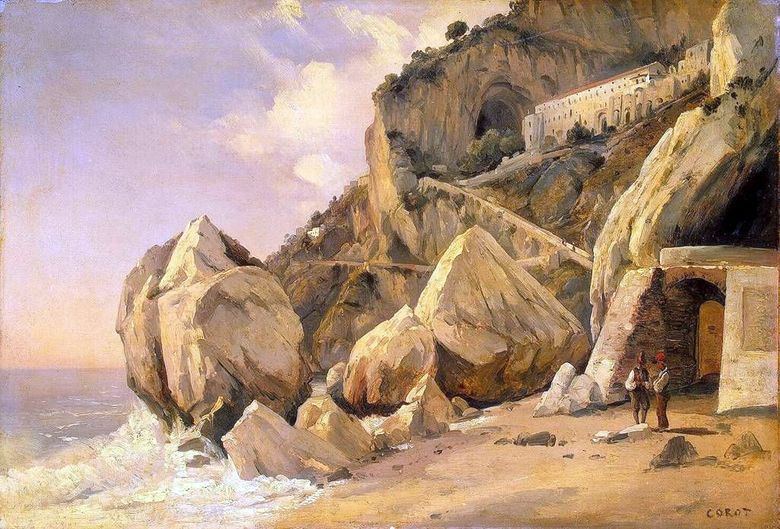 Falaises d’Amalfi – Camille Corot
Falaises d’Amalfi – Camille Corot Rocas en Amalfi – Camille Corot
Rocas en Amalfi – Camille Corot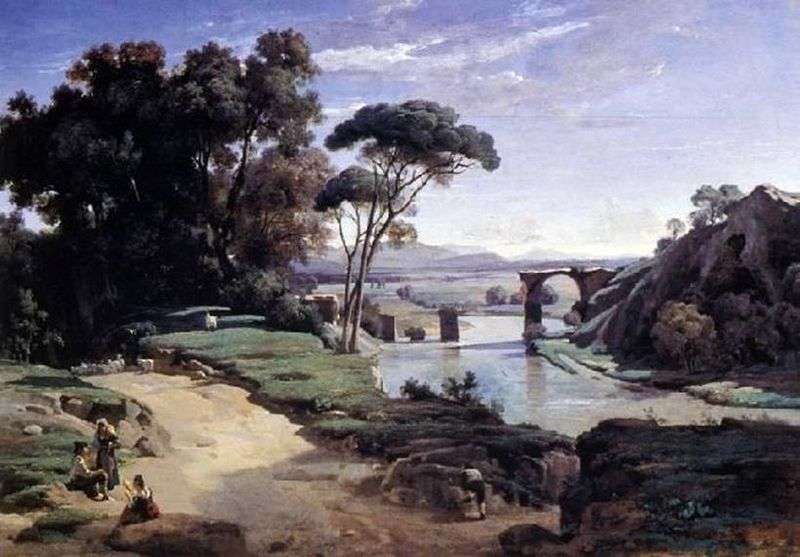 The bridge in Narni by Camille Corot
The bridge in Narni by Camille Corot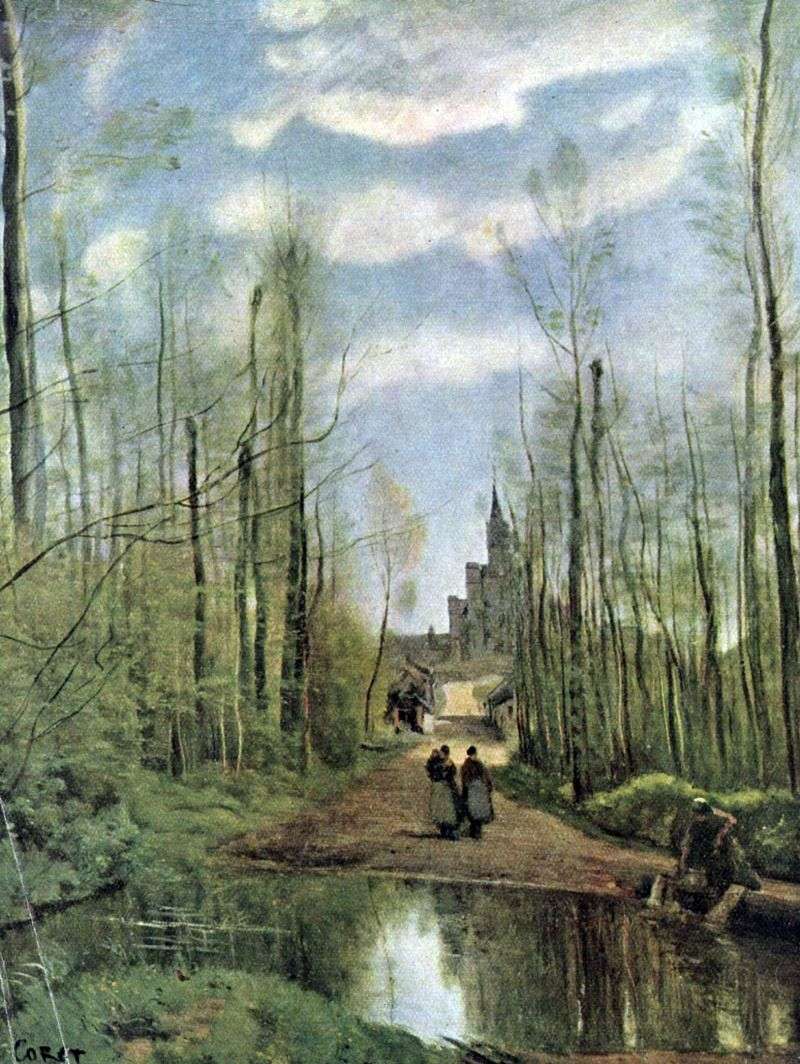 Church in Marissel by Camille Corot
Church in Marissel by Camille Corot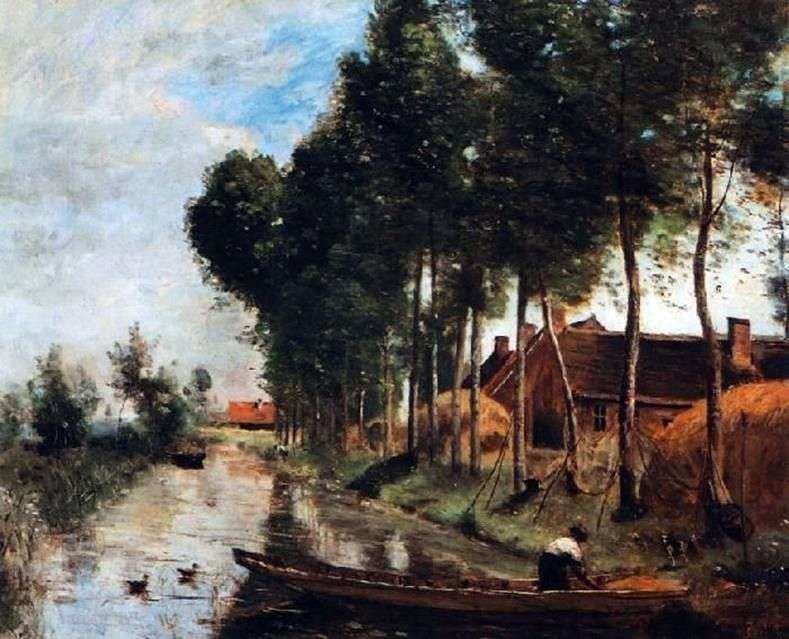 Landscape in the Arles du Nord by Camille Corot
Landscape in the Arles du Nord by Camille Corot Landscape with a boy in a white shirt by Camille Corot
Landscape with a boy in a white shirt by Camille Corot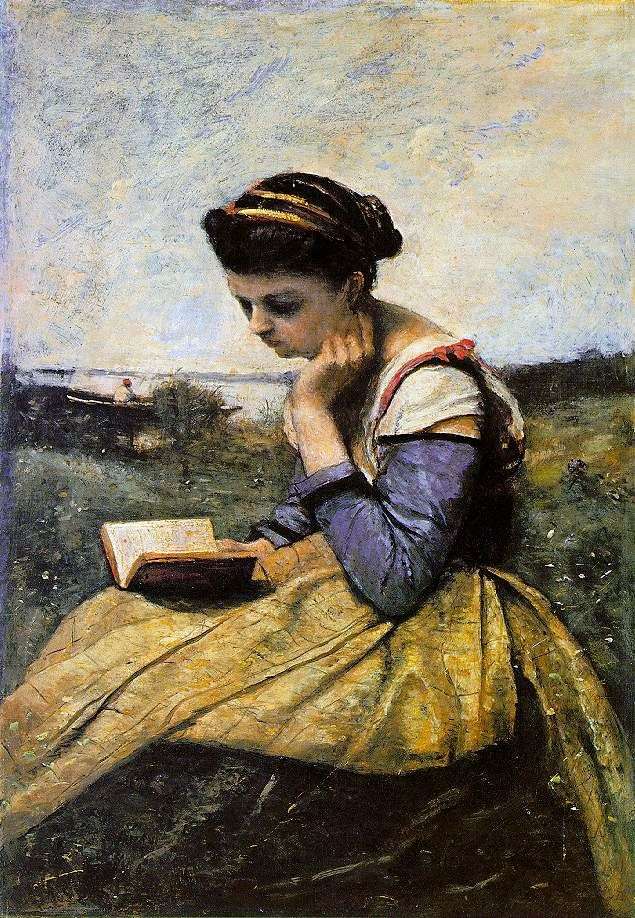 A reading woman in the landscape by Camille Corot
A reading woman in the landscape by Camille Corot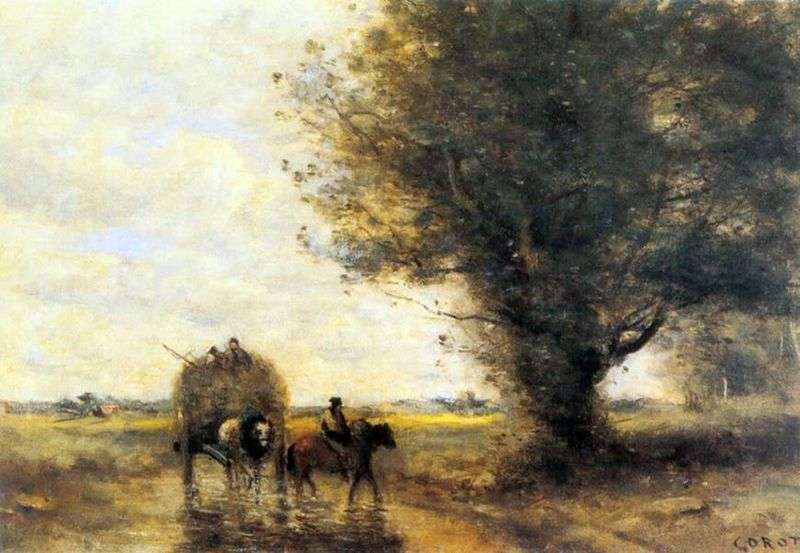 The hay by Camille Corot
The hay by Camille Corot